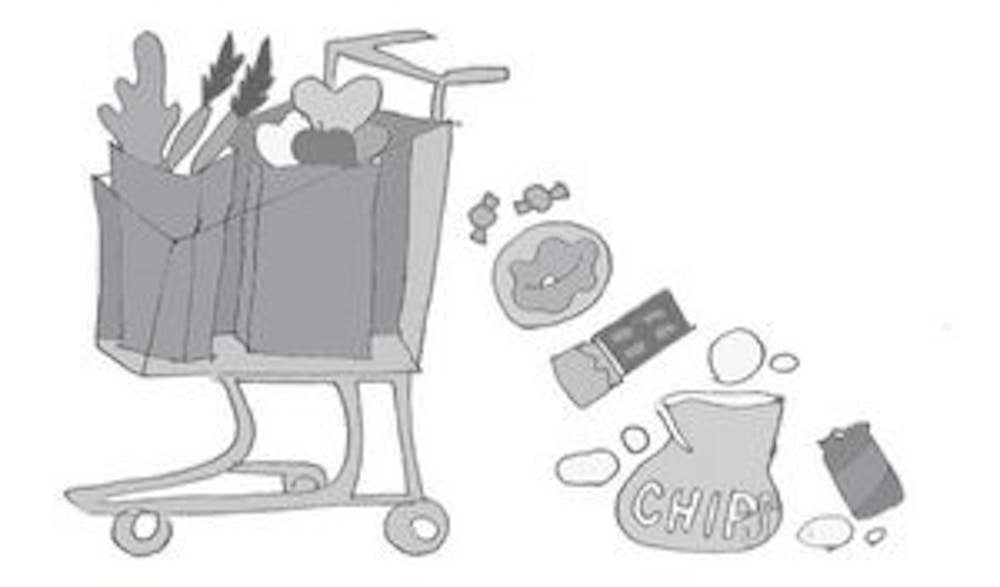A healthy diet begins in the shopping cart. Though it can seem like a daunting task for some of us, grocery shopping is a necessary step in beginning or maintaining a healthier diet. Fortunately, grocery shopping has some tricks up its sleeves, and by learning these simple rules, you won’t just be a healthier shopper, but a more confident one as well.
Be Prepared
It may sound silly to “be prepared” before grocery shopping, but you’d be surprised (or not) by what can happen from a lack thereof. First, never go shopping on an empty stomach; you’re less likely to go on a binge shopping spree if you’ve had something to eat beforehand. Second, make a grocery list, or at least set parameters.
A list will keep you on track, and you’ll be more likely to arrive at the finish line (checkout) with a cart that more closely resembles a well-planned grocery visit versus the “how did I end up with this” scenario when unpacking the groceries at home. Third, shop sales and use coupons. Healthier foods that you may usually consider too expensive can be bought at a more affordable price.
Shop the Outskirts
Grocery stores are built so whole foods like dairy, eggs, meat, fresh fruits and vegetables make up the outer boundaries of the store, while processed foods typically make up the center aisles. Because most whole foods are a single ingredient unlike products found in the center aisles, they are more nutrient dense and have less added salt, sugar and empty calories.
Buy Frozen or Dried
Frozen fruits and vegetables undergo flash freezing, which preserves their nutritional content, making them great substitutions for the “real” thing. Buying frozen saves money, plus it lasts longer (saving grocery visits) and you don’t sacrifice quality. Dried cranberries, peaches, apples, plums, bananas and papaya are also convenient, affordable and healthy ways to enjoy fruit.
Read Food Labels
Upon arrival to the center aisles (we can’t avoid them altogether), reading food labels becomes an invaluable skill. Learn to compare calories, fat, carbohydrates, protein and sugar contents between products to help you make better food choices.
Also, make sure to pay attention to serving sizes. For example, I like to buy cereals with a larger serving size (1/2 or 3/4 cup) since a 1/4 cup just isn’t enough to kick start my day.
Ingredient List
At first, it may look like a bunch of mumbo jumbo, but reading and understanding ingredient lists makes picking healthier foods a cinch. Ingredients are written in order from greatest quantity to lowest, meaning the first ingredient listed is the majority of that product. This is a great way to determine how much of the food product is actually what is advertised on the can or package versus how much is just sugar, high fructose corn syrup, water or other filler ingredients.
Avoid food with “hydrogenated oil” to minimize consumption of trans-fats. For those of you hoping to incorporate more whole grains into your diet, be sure to check for “whole wheat” or “whole meal” as your bread’s first ingredient and not “enriched wheat flour.”
Most of us have the best intentions when we step through the automatic sliding doors of our grocery store, but somewhere between the aisles, our cart begins to look less and less like the model of health we seek to achieve. However, by making lists, shopping smart and reading food labels, kickstarting a healthier diet at the grocery store will be a breeze.
Do you like this story? The Plainsman doesn't accept money from tuition or student fees, and we don't charge a subscription fee. But you can donate to support The Plainsman.




